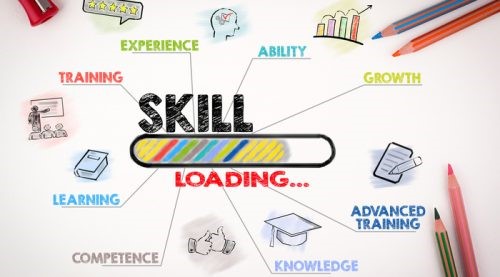Transforming the employee experience in the modern era
28/09/2018
As competition for a skilled workforce increases, and as the workplace becomes more complex, HR professionals seek to create a compelling employee experience – one that focuses less on what employees do and more on what motivates them.


The coming of AI
The personalisation of the employee and the learner experience is key to make it compelling and simple. This is a particular strength of AI and chatbots.So, how is today’s technology being used to transform the employee experience and what can HR professionals do to take the competitive advantage?Jeanne Meister – who will give a keynote at this year’s Business Transformation Summit – is an expert on the future of work and predicts that Artificial Intelligence (AI) will soon play a central role in the employee experience. Chatbots, she believes, are already changing the face of employee engagement. In a recent article for Forbes magazine, she says:“Chatbots digitise HR processes and employees to access HR solutions from anywhere. Using artificial intelligence in HR will create a more seamless employee experience, one that is nimbler and more user driven.”

Learning and development: a major component of the employee experience
Today, the modern workforce demands an agile approach to their professional and personal development, with an opportunity to take responsibility for the direction of their own learning.Instead of relying heavily on one-size-fits all courses pushed by the company, individuals are now developing their skills using a greater variety of tools, such as e-learning, MOOCs, Youtube, Chatbots, Virtual and Augmented Reality, e-coaching apps, etc.Technologies enable learning to be personalised and delivered just in time at the point of need. As such, learning requires less effort from the learner and has a more tangible impact on their performance and employability.
- By pushing relevant learning opportunities that fit with the learners’ preferences, on-going activities, skills gaps or their personal development planCurating these learning opportunities automatically from numerous libraries such as TED talks, MOOCs, etc.
The downsides and limits of automated employee and learner experiences
Trust is the number one condition of a successful user experience – either as a customer, employee or learner. As a user, I can accept to be guided and even influenced by a brand, by my employer, or by a learning provider, only if I trust them. This is especially true with AI, which demands lots of personal data.Employee engagement and effective learning transfer often come together and require not only a well marketed and automated user experience, but also live interactions with people, plenty of creative initiatives, surprises, time and effort. A fully-automated employee or learner experience will not meet these conditions.For AI to provide a relevant employee or learner experiences, the data used to make it work should be accurate and based on large populations, which might not be accessible to many employers.Life-long learner experience the way forward
We may wonder if the promise of a powerful AI-enabled learner experience can really be kept in the context of the employee experience, because:- More individuals are becoming increasingly autonomous in taking control of their learning, for both their professional and personal goals.
- In-demand soft or digital skills are not employer specific nor restricted to professional life
- Training providers – including Cegos – are starting to address the needs of individuals and are certainly seen as trustworthy long-life learning partners

- In France, for example, the new CPF (Personal Training Account) allows individuals throughout their work-life to access any certifying training of their choice, funded through a mix of public funds, employer contributions and personal financing.
- In addition, human capital management CM 3.0 delivers upon the idea that the employee experience can, and should, become the life experience through solutions that can be used at work and at home. This means seamlessly blending work, community, family and material aspects of what employees are seeking in their day-to-day lives.


Author = Simon Vuillaume, Director for International Projects, Cegos Group
